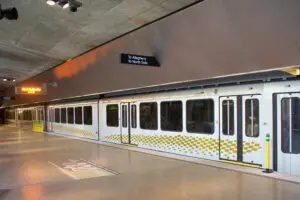
A recent news article noted that Pittsburgh Regional Transit (PRT) has made its appeal to the Allegheny County Regional Asset District (RAD) for a $3 million grant. Allegheny County levies a 1 percent local option sales tax that is divided between RAD, the county and its municipalities. The tax is levied on the same activity as the state’s 6 percent sales tax.
We analyzed the idea of using the sales tax to fund transit in 2007 and five years later PRT made its appeal to RAD for an annual grant. That year, the themes of the day were service cuts, layoffs, getting more money from the state—themes completely unheard of in this year’s transit debate.
PRT has been an annual grantee since 2013, receiving $3 million per year (with the exception of 2021, when RAD’s budget was adjusted for the pandemic). This despite the fact that the county levies specific excise taxes on alcohol and vehicle rentals for a local match for state operating assistance. PRT’s approved 2025-26 budget counts $43.7 million from all three sources to match $291 million in state funding, a total PRT is hoping is going to grow as a result of a state budget that might increase funding.
PRT’s CEO opined that another year of funding “would show legislators around the state that Allegheny County values its public transit.” It should also be clear how Allegheny County’s transit provider compares to its peers on operating costs. Legislators from all corners of Pennsylvania have access to Act 44 performance reports. PRT’s own annual service reports also show this data, and with four of 11 PRT board members appointed by leaders of the General Assembly, perhaps this message has been made evident.
The July ridership numbers still show PRT is down 37 percent compared to pre-pandemic July 2019. When do the local entities that provide funding begin to push for changes to routes and fleet, as we called for in 2022? It’s long overdue, and RAD can correct course this budget season.
